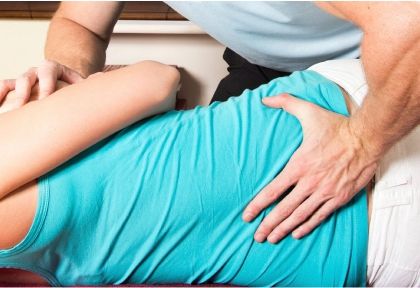
Cracking treatment is manipulating one.s joint to produce sound. it usuallu performed by physical therapists, chiropractors, osteopaths and masseurs in turkis bath.
The cracking of joints, especially knuckles, was long believed to lead to arthritis and other joint problems. However, this is not supported by medical research
The cracking mechanism and the resulting sound is caused by carbon dioxide cavitation bubbles suddenly partially collapsing inside the joints. To be able to crack the same knuckle again requires waiting about 15 minutes before the bubbles will be able to form again.
There are some interesting factors at play which help explain why some people get an urge to crack their backs. Ferreira says cracking joints may trigger a release of "feel-good" chemicals, like endorphins, which help relieve pain. Then there is the power of the mind. There is research suggesting that a placebo effect may be involved, with people enjoying the feeling and the sound despite clinical effects of spinal treatment often being the same with or without a "pop".
But it's certainly not all just in your head. Manipulating the spinal joints can help relieve pain and improve some range of movement, Ferreira says. Dr Aron Downie, a lecturer at Macquarie University's Department of Chiropractic, explains: "It provides movement into the spinal joints and this is thought to provide some pain relief … it provides a sense of muscle stretch as well." "However some people can get into the habit of self-manipulation because it does feel good and, in the majority of people, on its own it's unlikely to be effective for the management of back pain and therapists should agree with that as well." Downie says back pain is a very real problem: at any one time up to a third of people will find it limits their daily activities. The key, he says, is to manage it in a holistic way to prevent it from persisting. "Cracking your back for pain relief isn't a solution for sitting at a computer all day," Downie says.
Cracking is like rebooting a computer that keeps crashing, instead of addressing the fault that's in the hard drive," Downie says. "If you feel you're doing it often, I would really seek the opinion of a health professional." A small proportion of chiropractors focus on joint popping alone, but Downie says this isn't following clinical guidelines for treating back pain. It's why he says if a chiropractor or other therapist isn't giving you strategies to look after yourself in a constructive way, find someone else. Ferreira agrees: "You need a treatment approach that will be more active than passive … If someone goes to a health professional and all they talk about is the massage they will give or the back cracking, that's a red flag." Usually, joint cracking is harmless. There is no strong evidence it causes arthritis. But there are some risks, Downie says, particularly with the neck region, such as increased pain, headaches, pinched nerves and, on very rare occasions, blood supply disruption leading to stroke. Downie warns against cracking your own neck, which should only be performed by a qualified professional after a thorough examination.
To reassure you: treatments are safe, and we don’t really crack bones. There are certain techniques in which chiropractors quickly but gently push on the bones in your spine. Those are the techniques you can get the cracking sound with, and this is where the idea of bone cracking comes from. However, there are also chiropractic techniques that don’t use this high-velocity manoeuvre and that you don’t hear any noises with. This way people who find it scary to ‘be cracked’ can also be treated.







